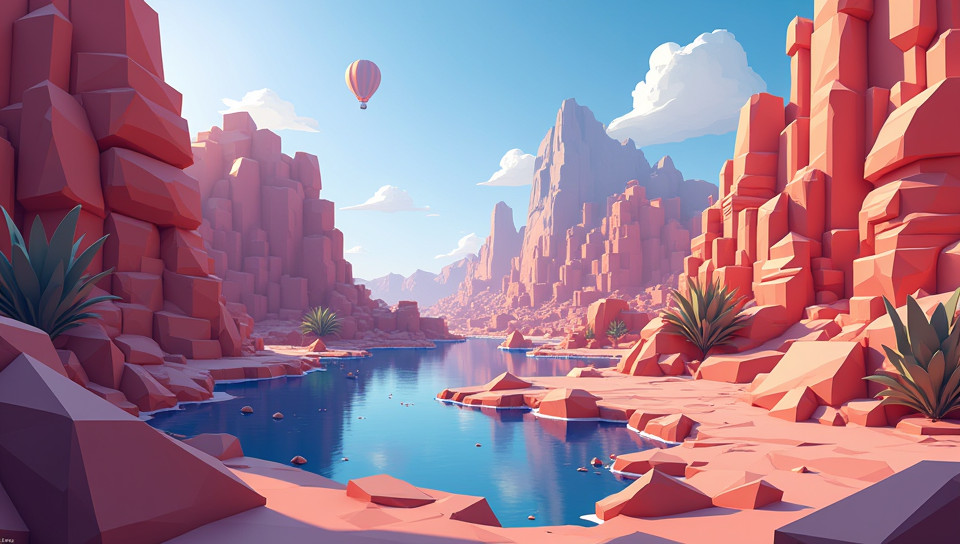Low poly style is used in the gaming industry 47%

The Art of Low Poly: Revolutionizing Game Design
Imagine stepping into a virtual world where every pixel is a deliberate choice, and every shape is a masterclass in simplicity. Welcome to the realm of low poly game design, where artists and developers are pushing the boundaries of visual storytelling. In recent years, the gaming industry has seen a resurgence of this style, which originated in the early days of computer graphics. Today, we'll delve into the world of low poly, exploring its history, key characteristics, and impact on modern game development.
A Brief History of Low Poly
Low poly art dates back to the 1970s, when computer graphics were still in their infancy. The first computer-generated images were often simple shapes and lines, due to limitations in processing power and memory. As technology improved, so did the complexity of digital art. However, with the rise of indie game development and mobile gaming, low poly styles experienced a revival.
Characteristics of Low Poly Art
- Simplified shapes and forms
- Reduced polygon count for lower system requirements
- Use of bold colors and high contrast
- Emphasis on texture and pattern over intricate details
- Often used in conjunction with pixel art or vector graphics
Low poly design is not just about simplicity; it's a deliberate choice to focus on what's essential. By stripping away unnecessary details, artists can create unique visual identities for games that stand out from more complex, realistic graphics.
The Benefits of Low Poly in Game Development
The low poly style offers several advantages in game development:
- Reduced polygon count: This leads to faster loading times and smoother gameplay on lower-end hardware.
- Increased portability: Games with low poly graphics can be easily adapted for different platforms, from mobile devices to PC and consoles.
- Creative freedom: The simplicity of low poly art allows developers to focus on gameplay mechanics and storytelling rather than getting bogged down in complex graphics.
Conclusion
Low poly game design is more than just a nostalgic trend; it's a forward-thinking approach that challenges traditional notions of visual fidelity. By embracing the limitations of early computer graphics, artists and developers can create innovative, visually striking experiences that captivate audiences worldwide. As the gaming industry continues to evolve, low poly styles will undoubtedly remain a driving force behind the next generation of game design.
- Created by: Matías Meza
- Created at: Jan. 24, 2025, 11:35 a.m.
- ID: 18652
